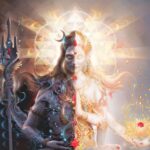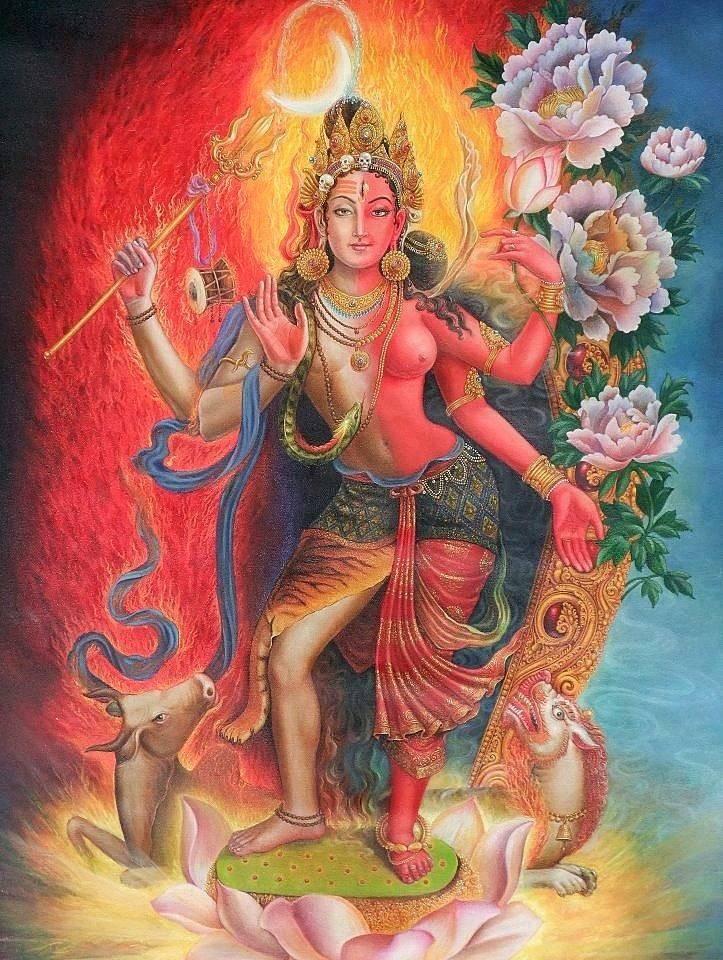
Shiva is consciousness and Shakti is the creative power directed by consciousness. Shivashakti is the sadhana shakti that is the perfect union of Shiva and Shakti which carries forward the spiritual development of the yogi. Therefore it is the process of salvation, of liberation, for it is the power of the One Indivisible God. Shivashakti manifests as the subtle power in our various bodies that moves upward and establishes itself in the Sahasrara chakra, the physical, astral and causal brain. This force is both breath and prana polarized to the highest centers of awareness in the brain. It is the ascent of consciousness in the yogi.
Shivashakti effects the union of the individual with the Absolute. When Shivashakti is steadily increased, the person begins entering into levels of evolution beyond humanity and ultimately becomes one with Brahman.

For a genuine Shaivite, Shiva is the infinite, non-dual Reality, not a mythological figure. Such a Shaivite fixes his awareness on that Reality, knowing that It alone existed in the beginning, even now alone exists, and in the future will be revealed to the yogi along with his life-force, his prana or shakti, as his own Self. Even before the beginning there existed the One that was Two: Shiva/Shakti. And in the end That alone will exist. So now That must fill the yogi’s mind.
Shakti is usually equated with maya, but in the Nath Yogi tradition expounded by the master yogi Gorakhnath Shakti is really Shiva in his dynamic aspect. They are not two, but one, and Shakti reveals the Self and liberates the individual spirit or jiva. Those of spiritual consciousness do not fear Shakti, but take refuge in her, while those of material consciousness are addicted slaves of maya.
In the West masculine is considered active and feminine passive, no doubt because the West bases its ideas on external, material experience and social, whereas the East bases its ideas on interior, subtle and spiritual experience. So in the East it is just the opposite: the purusha is the non-acting, passive witness of the activity of prakriti. The eternal male observes the cyclic dance of creation performed by the eternal female. The concept of Shiva and Shakti is not just an idea, but a practical awareness of the nature of the evolutionary process of the universe.
The yogi is aware that as a human being he is both Shiva and Shakti, and orders his life, especially his sadhana, accordingly.
Usually in contemporary writings “Shivashakti” means both the consciousness and energy of Shiva the Infinite. Shivashakti is the totality of life and life forms. There is nothing outside its domain, and when yogis use the term they mean the spiritual power whose interior action accomplishes the perfection of the yogi, changing him into a siddha. Without the action of Shivashakti in our life there can be no evolution, no liberation. Even the idea of liberation cannot arise in the mind except through Shivashakti. Authentic spiritual consciousness and practice are manifestations of Shivashakti which has become awakened in the yogi. Shivashakti is the beginning, middle and end of the yogic process. Obviously only those who have attained siddhi have the capability of even explaining or describing it.
Shiva and Shakti are the same thing, like the two sides of a coin. But in relativity they appear to be not only two but separated and needing unification. In the dream of life this illusion pervades, but we can also dream a process of unity, and that is yoga sadhana. The union of Shiva and Shakti is in the core of the Sahasrara, the chidakasha. There is located the power of the supreme jnana.
When the yogi awakens the divine power that pervades his bodies, unifies and directs it upward into the Sahasrara, in time the core of the Sahasrara will be awakened and the subtle power will be drawn into it, completing its existence. Symbolically this is called the union of Shiva and Shakti. Shakti merges into Shiva and becomes Shiva. Duality ceases to exist and the consciousness of the One Only Without a Second (Ekam-evam-advitiyam) remains. This is liberation: moksha.
Is there such a thing as matter? Is there such a thing as energy/shakti? Yes and no. There is the idea and the experience of energy, yet ultimately there is only consciousness. Therefore the mind as an idea/concept is a “fragment” of the Self. In actuality we do not “drop” anything, but rather through sadhana we transmute it until it is revealed in its true nature as spirit/consciousness. Just as we do not really die, but rise to higher life, in the same way the gross and subtle bodies are assimilated into the Self from which they originated, in which they evolved and into which they return.
In the great mystery drama of the lives of Jesus and Mary, the Resurrection-Ascension and the Assumption represent this return. This is liberation.
Sanatana Dharma and Yoga are not Christianity, but authentic Christianity is indeed Sanatana Dharma and Yoga and not Churchianity at all.